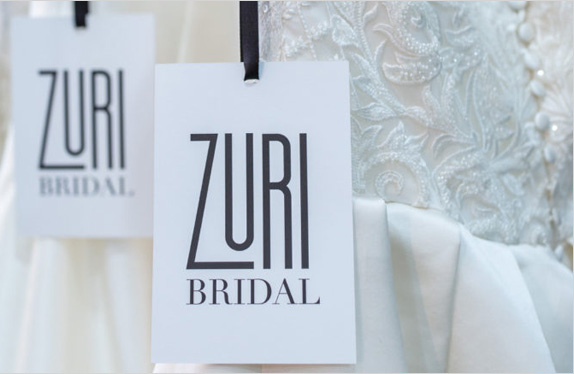Saying “yes” to the dress may seem like the end of a long and emotional journey. But you’ve still got a ways to go before it’s ready for your walk down the aisle.
One of the most important steps on your journey to that special day is getting your dress altered. The likelihood that your dress will fit perfectly out of the box is slim (no pun intended), which means you’ll need some expert tweaks to achieve a flattering fit. While alterations may seem overwhelming, there’s no reason to stress out. Here are some top wedding dress fitting tips to help you feel totally prepped.
Common misconceptions about wedding gown fittings
Let’s take a moment to clear up some common misconceptions you may have about wedding dress fittings. For starters, it’s not a fast process. “Normal” alterations can take anywhere from 2-3 months. This doesn’t even take into account any custom work that you may want done.
Then there’s the question of price. Keep in mind that a quality seamstress is a true artisan. She’s been trained in her craft and deserves compensation for her time and work.
Generally, you should budget at least $500 for gown alterations.
Finally, many brides expect the dress to fit perfectly during the second fitting. This almost never happens! It takes time to achieve a perfect fit. Be patient, trust the process, and know that you will end up with exactly what you want for your big day.
What typically happens during a dress fitting
Alright, let’s talk wedding dress fitting etiquette.
Your first gown fitting will be typically scheduled at least three months before the wedding date. At this fitting, the seamstress will record your measurements and help you into your gown. Then she’ll ask if there are additional changes you want to make to the gown. These can include custom straps, lowering the neckline or back, etc.
After she outlines the work that needs to be done you’ll know exactly how many fittings you’ll need before the dress is ready.
These sequential steps are exactly why you should factor in at least 3 months for alterations. To meet this timeframe, we recommend purchasing your gown no sooner than 7 months before the wedding (9-12 months is even better).
Know that your seamstress takes great pride in her work. It may take 2 months and 4 fittings, but you can rest assured that the result will be sheer perfection. Understanding proper wedding dress fitting etiquette is really just about being prepared and having the right expectations for the process.
Why are wedding dress fittings necessary
When you purchase your gown, the bridal store compares your measurements to a size chart and then selects the designer’s size that is closest to your measurements. But it’s very rare that anyone fits perfectly into the chart size. This is often because individual designers use their own size charts and they are all very different from each other.
Plus, industry hem length is usually longer than the average bridge needs, so most gowns will need to be hemmed at the very least, and will likely also need alterations in the bust or hips.
In short, alterations and fittings are necessary to give you the ideal fit for your wedding day.
What to wear to a wedding dress fitting
One of the big questions brides often ask is what they should wear to your wedding dress fitting.
For starters: wear your wedding shoes! Different shoes will impact your height, which can dramatically change the fit of the dress. Other important items to bring are the bra and undergarments you plan on wearing at the wedding. Changing your undergarments will change the fit of your gown, which will cause headaches and stress later on in the process.
Don’t do that to yourself. Instead, plan ahead!
What if you’re worried about getting your wedding dress altered?
If you’re concerned about getting your dress altered, our biggest piece of wedding dress fitting advice is this: find a seamstress that specializes in bridal gown alterations.
If you find someone who has a lot of experience you can be confident knowing that they’ve altered many bridal gowns. An experienced seamstress will have familiarity with fabrics, silhouettes, and even specific designers – all things that will lead to a perfect experience.
It’s important to remember that your seamstress can’t read your mind! If something isn’t the way you envisioned, tell her. If you have concerns, don’t be afraid to voice them or ask questions. The more you make your concerns known, the better your seamstress can address them and make sure that you get exactly what you need.
Bridal gown fittings are an important part of your wedding journey. But if you don’t want it to become a hectic, stress-filled process, you need to do your homework and plan ahead. Give yourself and your seamstress at least three months to make all the necessary alterations. Make sure you communicate your expectations with her so there are no surprises.
Most importantly, take a deep breath, and enjoy this part of your journey. After all, this is all a once-in-a-lifetime experience!


